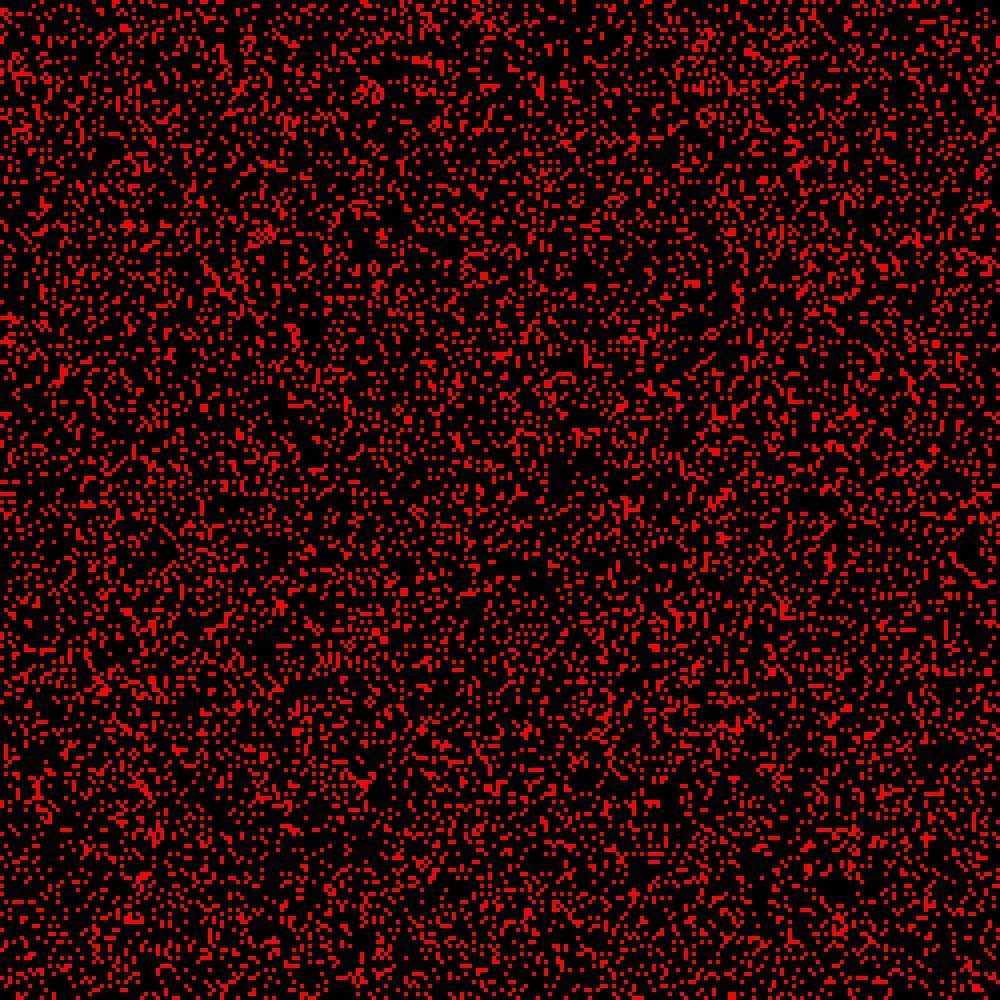Repository
What is a Cellular Automata?
You’ve probably heard of Conway’s Game of Life
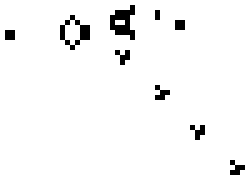
Conway’s Game of Life is actually just one of many Cellular Automata that exist! Cellular Automata can have many different rulesets (rules on conditions for cell’s to come alive, survive or die). What I made is an engine that can support any ruleset for Cellular Automata. It also is setup modularly so the Automata can be rendered in many different ways
Why?
This idea has been fully explored by others at this point, but Cellular Automata are something I find very exciting. So, I took this solved problem as an opportunity to learn about software design patterns. I ended up writing my engine using three different design patterns:
- Observer Viewer Model
- Event Emitters/Subscribers
- Model View Controller
Technologies I used
- python
- pygame
- PIL
- opencv
Observer Viewer Model
The implementation had a Grid that handled all the logic of the automata and the Grid had a viewer attached to it. The idea was that whenever the grid had a change in state that it would notify its viewer to render the grid.
grid
@dataclass
class Grid:
width: int
height: int
cells: List[Cell]
...
def add_observer(self, _observer) -> None:
self.observer = _observer
def notify_observer(self) -> None:
self.observer.update()main game loop
while True:
...
grid.calculate_next_generation()
grid.notify_observer()while this approach worked it didn’t feel quite right. It had issues with the chain of command. Say I wanted to update the pallete for the viewer or make any change that would only effect the viewer and not the state of the game. How would I do this? I’d have to give instructions to the Grid that would then be passed down to the viewer. This felt clunky and I wasn’t satisfied with this approach.
Event Emitters/Subscribers
After a suggestion from a friend I tried to change up my architecture to have all my components communicate through event listeners and emmitters
event classes
from typing import Any, Callable
from dataclasses import dataclass
@dataclass
class Event:
name: str
data: Any
class EventDispatch:
listeners = {}
def add_listener(self, name: str, listener: Callable) -> None:
if name not in self.listeners:
self.listeners[name] = []
self.listeners[name].append(listener)
def dispatch(self, event: str) -> None:
if event.name not in self.listeners: return
for listener in self.listeners[event.name]:
listener(event)how Viewer used the events system
class Viewer:
def __init__(self, _screen: pg.surface, _display_config: DisplayConfig, _event_dispatch: EventDispatch):
self.event_dispatch = _event_dispatch
self.screen = _screen
self.screen_size = self.screen.get_size()
self.display_config = _display_config
self.pallete = self.display_config.data["pallete"]
def set_model(self, _model: model.Model) -> None:
self.event_dispatch.add_listener("update_pallete", self.update_pallete)how other classes would dispatch to Viewer and update its pallete
self.event_dispatch.dispatch(Event("update_pallete", None))This approach was fun to implement, but after rubber ducking with a friend I realized it didn’t suit my problem. There were only singletons of my components and having them listen and emit to eachother was effectively the same as them all having references to eachother and calling functions on one another. Very fun design pattern to learn about and i’m excited to use it when I have a problem that better suits it :)
Model View Controller
Ultimately this approach felt the most sensible to me. My friend Heather and I whiteboarded out a diagram for how I would design this system
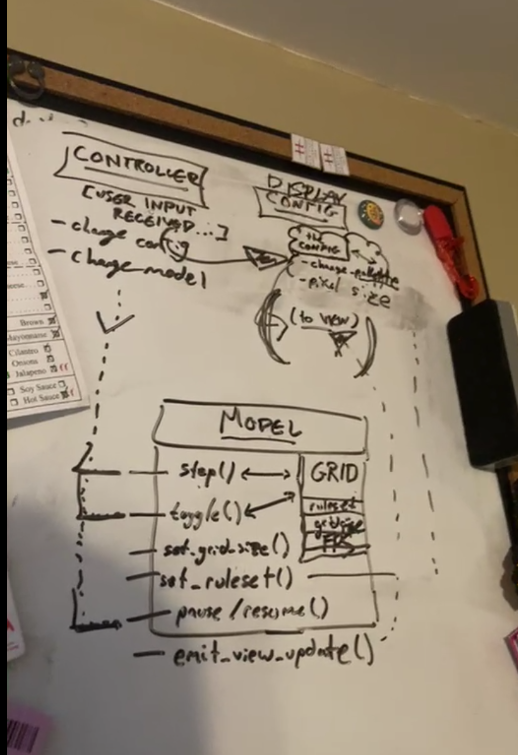
In this setup I had these components:
Model
- contains the Grid class which handles the logic of the automata
- has a function called
step()which is the main loop of the application
def step(self) -> bool:
"""
takes a step in the game loop
grid -> calculates next generation
viewer -> tells viewer to render
"""
# model tells grid and viewer to update
# returns true if there are more simulations to run
if self.generation == self.total_generations:
self.viewer.cleanup()
return False
if self.running:
self.generation += 1
self.grid_model.calculate_next_generation()
self.viewer.update(self.grid_model)
return Truestep tells the Viewer when to render and the Grid when to calculate its next generation
Display Config
- contains config information/functions to handle config attributes purely pertaining to the Viewer class
class DisplayConfig:
pallete_set = [
palletes.ClassicPallete, palletes.TransPallete,
palletes.MatrixPallete, palletes.RetroPallete,
palletes.GameBoyPallete, palletes.PastelPinkYellowPallete,
palletes.PastelBlueYellowPallete, palletes.BlackRedPallete
]
data = {
"pallete_index": 0,
"pallete": palletes.ClassicPallete
}
...
def update_pallete_index(self, n: int) -> None:
# update pallete index and current pallete
self.data["pallete_index"] += n
if self.data["pallete_index"] >= len(self.pallete_set):
self.data["pallete_index"] = 0
elif self.data["pallete_index"] < 0:
self.data["pallete_index"] = len(self.pallete_set) - 1
self.data["pallete"] = self.pallete_set[self.data["pallete_index"]]Viewer
- a viewer can be anything. Currently there are two types of Viewers
- ExportView → exports the automata simulation to an mp4 file
- GridView → uses pygame to render the automata in real time and supports interactability with Controller component
- its main source of truth is the Display Config component
- for example this is how it updates its pallete
def update_pallete(self):
"""
controller will send signal to display config to
update the pallete. display config will send signal to
viewer to read new pallete from display config
"""
self.pallete = self.display_config.data["pallete"]- Model component informs it when to update
- Controller instructs it when to update config settings
Controller
- has the most power of all the components. It can talk to the model, viewer and display config when needed
- informs the Viewer and Model when to make changes based on user input
- most of its functionality is contained in the
read_input()function. This snippet ofread_input()is how the pallete is updated for the Viewer
def read_input(self):
for event in pygame.event.get():
# key press event handling
if event.type == pygame.KEYDOWN:
# `d` increments the pallete index
if event.key == pygame.K_d and not self.key_pressed["d"]:
self.key_pressed["d"] = True
self.config.update_pallete_index(1)
self.viewer.update_pallete()
# `s` decrements the pallete index
elif event.key == pygame.K_s and not self.key_pressed["s"]:
self.key_pressed["s"] = True
self.config.update_pallete_index(-1)
self.viewer.update_pallete()
...Example Videos
Here are just a few examples of the automata you can generate with an ExportViewer!
Ruleset → Conway’s Game of Life
Grid Size → 500 x 500
Pallete → Matrix
Lifetimes → False
Generations → 150
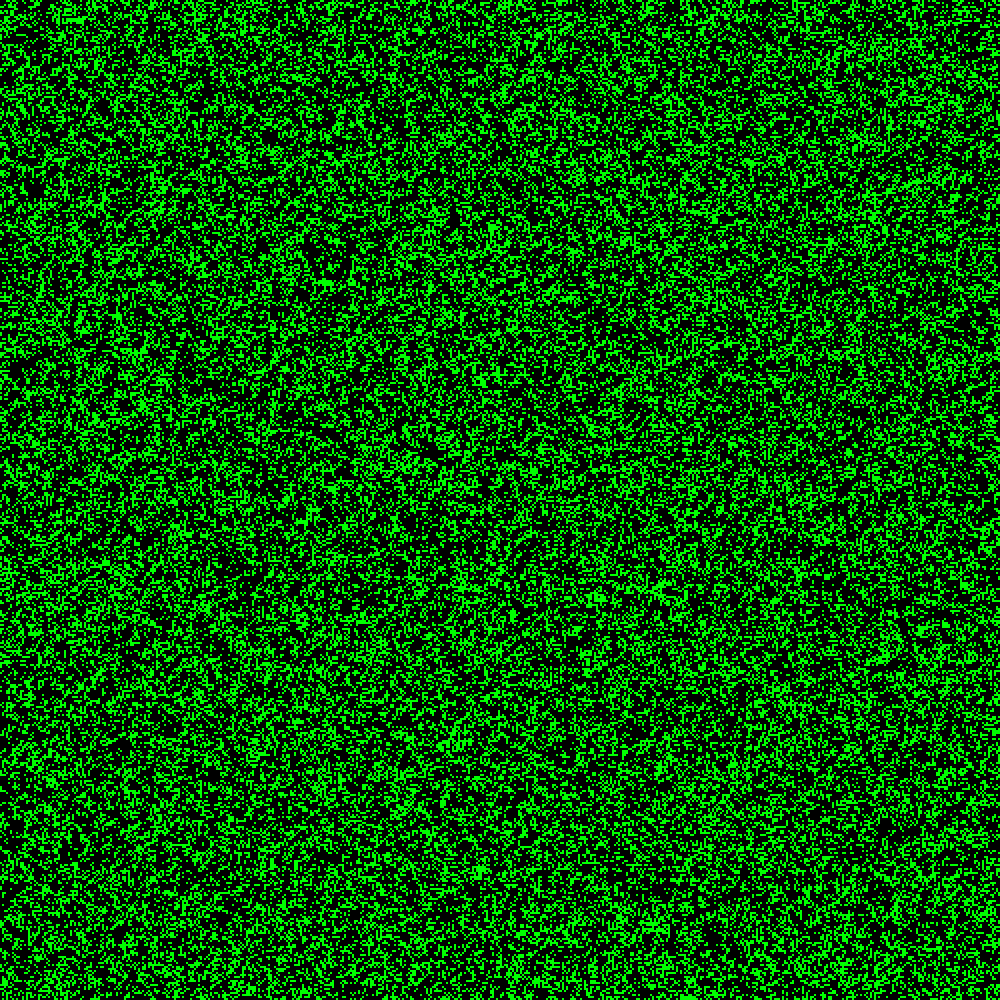
Ruleset → High Life Ruleset
Grid Size → 500 x 500
Pallete → Black Red
Lifetimes → True
Generations → 300
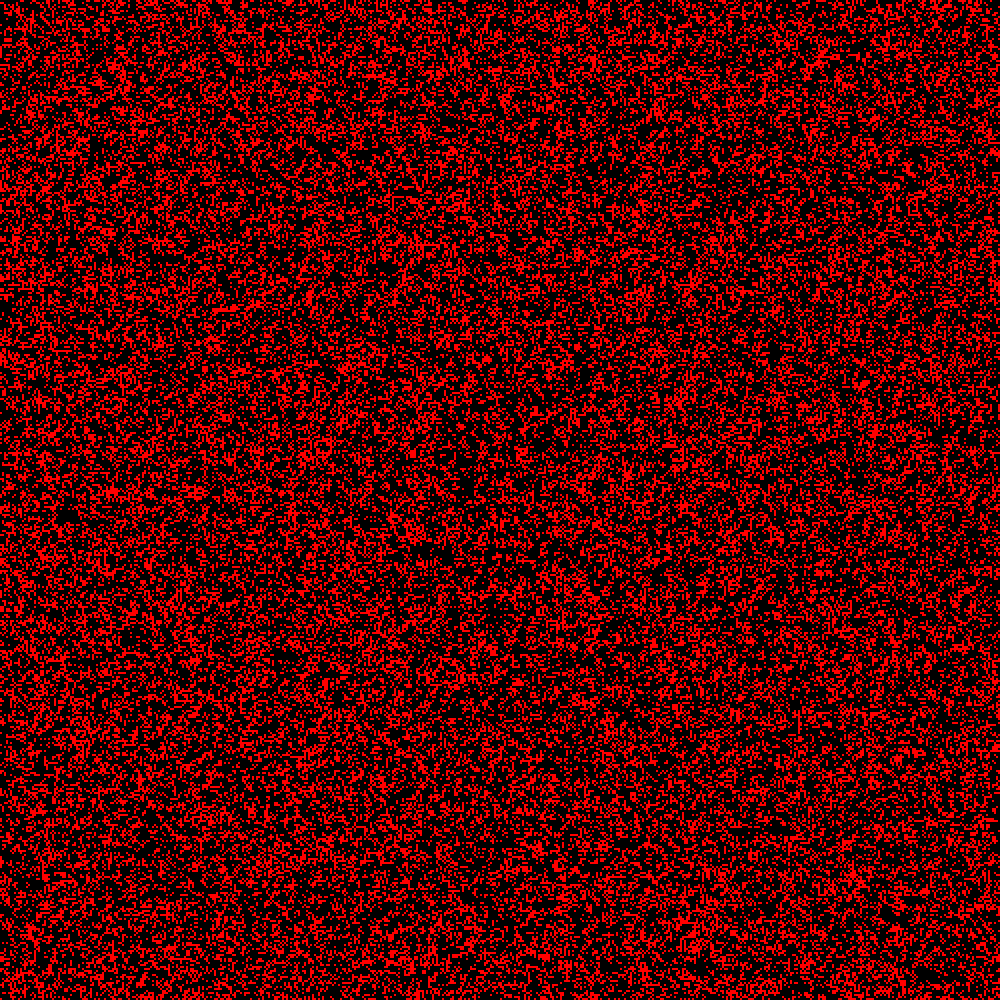
Ruleset → Day and Night Ruleset
Grid Size → 250 x 250
Pallete → Cycles
Lifetimes → True
Generations → 300
